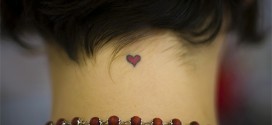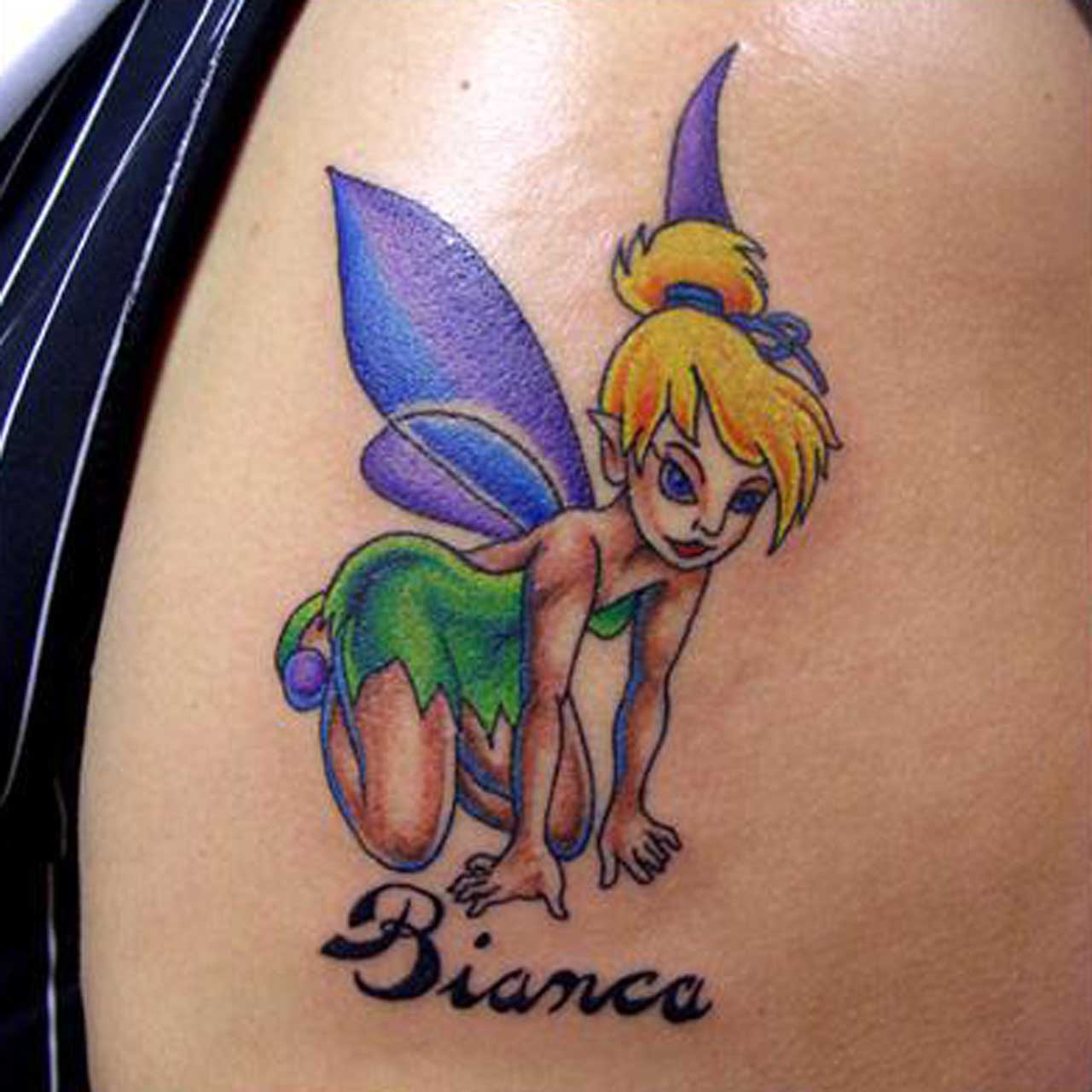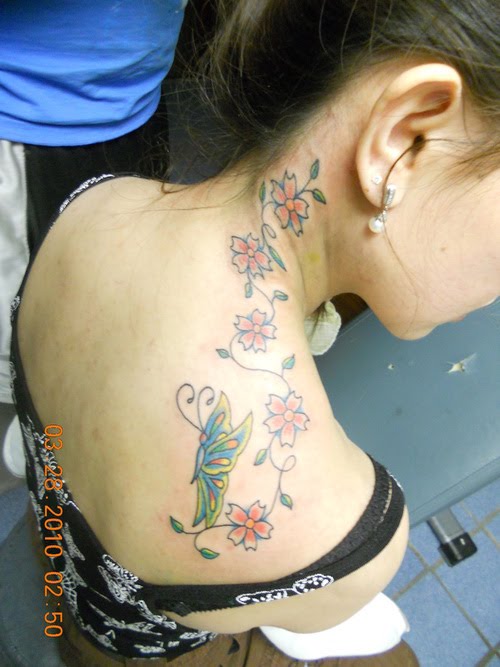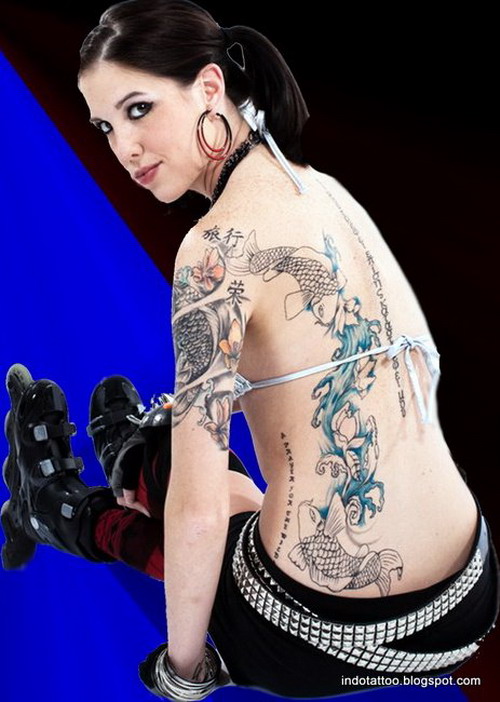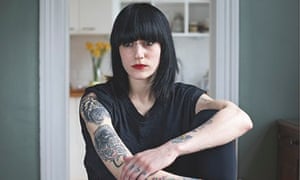
The first tattoo I ever saw belonged to my grandad. He had it done in Scotland during his national service in the 50s, so the tattoo must have been more than 30 years old when I became fascinated by it. I used to ask him to roll up his shirtsleeve and I would use my finger to follow the outline of a woman cheekily reclining in a margarita glass. The shading that was supposed to indicate the flirty curl of the woman’s toes had become a faded, bluish blur. Now and again, he’d wink and say it was a picture of my granny. She would purse her lips in pretend disapproval. My grandad died over 15 years ago and I’d have to look at a photograph to remember the details of his face, but I can always remember that tattoo.
I was raised in a religious household where tattoos were verboten; the body was a temple and women even hesitated over piercing their ears. Modesty in all things was required, especially for girls, and a flash of colour on the skin was a desecration of a holy vessel made in God’s image. So I went and had my first tattoo done when I was 16. I was out on my own for the first time, throwing myself headlong into making my mark, and letting the world mark me.
My college had a small fund for students in dire financial circumstances. At the beginning of the year, I was given a cheque for £50 and told to spend it on books. I did. At the end of the year, the fund had been underspent and what was left was divided between the students who’d already received an allowance from it. I took my £300 and went to Manchester with my best friend. We bought books, clothes and tattoos: I got a star on my back, he got something similar, but not matching, on his upper arm.
On the train home, we peeled off our dressings to admire and compare. The parlour wasn’t exemplary: the tattooist should have asked my age and turned me away, and I certainly wouldn’t be so impulsive now. But even so, my star reminds me of the most enduring friendship I’ve had, the optimism that characterised my late teen years and my innate disobedience. These are all good things, and none of them, like the tattoo itself, is an aspect of myself I’d want to rub out and forget. It wasn’t rebellion, it was reclamation. My first mark reads: this skin is mine.
But what if a tattoo turns out to be a mistake – not a mark, but a scar? Despite the increasing availability of procedures aimed at removing tattoo ink from the skin, most of us go under the gun knowing full well that the image will be permanent – that’s part of the attraction. I’ve heard plenty of jokes about impulsive engravings of a beloved’s name, resolved with expensive cover-up work once the relationship has ended.
When I was 19, I went to a studio in Cambridge with my then boyfriend and we had simple circles tattooed on the inside of our wrists. The ink lasted longer than the relationship did – of course, that’s what happens when you’re too optimistic for your own good – but the tattoo is no less important for that. Our daughter likes to trace the circle on my wrist with her finger and hear the story about why and how we got them. Relationships come and go, but some people’s histories are always entwined with each other, and some of us like to write our histories on our skin. This mark reads: you were here.
Tattoos can be useful or beautiful or a combination of the two. That’s reason enough. Sailors used to get images of Christ inked on to their backs to make the first mate reluctant to use the whip on them. They’d ask for elaborate designs on their limbs to mark voyages taken and ports visited – a kind of indelible dog tag that, they hoped, would identify a corpse lost at sea and washed ashore. Every mark had a story. The most striking tattoo I’ve seen is a full back piece depicting a Japanese woman wearing a red, richly patterned kimono, falling open to show her breastfeeding a standing toddler. The woman has the back of her hand over her eyes – bored, perhaps, or frustrated by demands this particular task of motherhood is placing upon her. But she’s smiling. The artwork must have taken hours and cost hundreds, if not thousands – the folds of the kimono look like a breeze would lift and ripple them. My daughter liked it, too. She called it “the mummy in the red dress”. I had a photograph of it stuck over my writing desk for years.
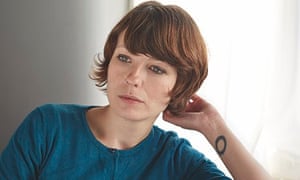
What if the marks we make on our skin don’t stay beautiful? I have a tattoo five inches lower than my belly button – a waxing and waning moon entwined with my daughter’s initials. Friends warned me against it. If you get pregnant again, the most imaginative advised, the letters will stretch out like they’re written on a blown-up balloon. Even the tattoo artist warned me that the skin was delicate there and the ink might not stand the test of time.
They were right. I did have another child, by a caesarean section, no less, and although the surgeon did her best to avoid the tattoo, complications resulted in a wider-than usual incision. The thick, white scar that denotes my son’s entrance into the world runs across the tattoo. The skin around it is dotted with marks where the staples joined me back together, the puckers where the drains at the site of the wound were placed. By some people’s standards, this is a mangled piece of body art, not pretty and not sexy. But it was never meant to be those things. I wouldn’t dream of having it altered to cover up the record written on my body of what motherhood means. This mark reads: some things hurt.
Some things I have heard about women’s tattoos: they are chavvy, common, tasteless. They are a mark of the slut, the slapper, the loose woman. Men’s tattoos might be about allegiance to a gang, a subculture, a faith or a family. They might be to memorialise a lover or child, remember a journey, a period of time in prison or a religious conversion. Why are women’s tattoos often viewed in terms of their sexual attractiveness, or the indicator they are perceived to give about her availability? Why is women’s skin still considered public property she has no right to alter? Apparently, these marks of mine are a waste of money and they’re just going to fade, blur and sag.
It’s true. The ink will age at the same rate as I do – just like my grandad’s did. That’s fine with me. The marks aren’t decoration, aren’t designed to draw the gaze or enhance a feature, and even if they were, what’s wrong with skin that looks the age it is, rather than the air-brushed and painted flawlessness of an eternal 20-year-old? What’s wrong with bellies, arms and breasts that loosen and relax as the years pass? I want my tattoos to look the age they are.
Of course, there are plenty of reasons to dislike tattoos – like any piece of art, not every style will be to everyone’s taste. To some, the permanence will never appeal. Or perhaps there’s nothing as beautiful to their eyes as unmarked flesh. Jewish friends have told me they wouldn’t dream of having their skin inked, not only knowing but feeling the particular history of forced tattooing, used in concentration and labour camps like branding on cattle. Some women friends consider any form of body modification, from bra-wearing to eyebrow-plucking, to be a betrayal of deeply felt feminist principles.
For others, I suspect the vehement dislike of tattoos is really a fear of women’s skin. When a woman makes her own mark on it, she isn’t quite as available to receive whatever fantasies you might want to project on to her. If skin is a screen, and a woman writes on it, she is telling the world (or even just herself) that her own standards of attractiveness are more important to her than the standards of anyone else who might cross her path. She is taking ownership.
Some say tattoos are addictive – that it starts with a butterfly on the hip and ends with full sleeves and a septum piercing. Maybe. It’s been a while since I was last inked, but I’ve been planning my next for some time. A compass on my foot. To remind me of where I’m going, and of times I might forget.
Elise Harrison, furniture/product design student, 25
(Pictured top) My dad has no idea I have tattoos. I cover up when I see him and wear fingerless gloves – I have to tell him they’re in fashion. I only really see my parents at Christmas. It would be a nightmare if we were somewhere hot. My dad is old-fashioned: he thinks all tattooed people are prostitutes or criminals. That’s the background he comes from.
The pain is a weirdly enjoyable feeling. The unicorn on my arm was my first big one. Obviously it hurt, but it makes you feel as if you’ve gone through something to achieve it. You have to have guts to have a tattoo.
I’ve got a panther on my arm because it’s what Ginger Spice from the Spice Girls has. I used to love them so much. I’d wanted her panther tattoo since I was nine. The tattoos on my arm don’t really flow, but that sums me up. I’m impulsive and disorganised. It’s organised chaos.
I’ve got a couple of ex-girlfriends’ names tattooed on me, too. Whenever I get a new girlfriend, they’re a bit jealous. I sometimes think about erasing them, but that would be like pretending it didn’t happen. My body is like a scrapbook.
Juanita Carberry, merchant navy steward (passed away in July, aged 88)
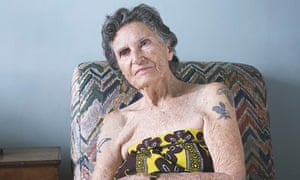
The daughter of a renegade Irish peer, Carberry lived an extraordinarily full life. Her childhood in Kenya was difficult: her mother, a well-known aviator, died when she was three, and Carberry was often beaten by her governess. As a teenager, she was a key witness in a celebrated murder case, the 1941 shooting of the 22nd Earl of Erroll, and at 17 she joined the first aid nursing yeomanry in the Women’s Territorials during the second world war. In 1946, Carberry became one of a handful of women to join the merchant navy, remaining for 17 years. It was during this period, says photographer Christina Theisen, that she started acquiring tattoos. Her first was a small spider on the sole of her foot; it didn’t hurt, Theisen recalls Carberry saying, because the skin on her feet was so tough from walking barefoot as a child. Her seven tattoos are of animals; in later life, she became active in animal welfare. On her left shoulder is an African fish eagle. “The tattooist got the fish the wrong way round,” says Theisen. “She was so upset”. Above that is an elephant. On her right shoulder is an albatross: “She wanted to come back as one when she died.”
Sukran Sahin, journalist, 33
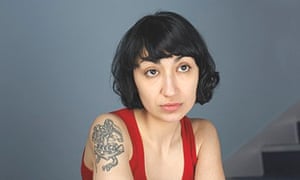
I got my tattoo about nine years ago, when I was 24, so I wasn’t that young and it wasn’t on a whim. I was thinking about it for a year. I’m not sure why I chose an anchor. I guess I like the maritime theme. The writing on it is more significant. It says, “The common breed”, which is a line from a Suede song. Suede sang about life on the margins, in council homes. I’m from a working-class immigrant background, and for the first time I felt sure about my identity. I wanted to do something to remind me of that moment. It felt empowering to create something irreversible and visible, and not to be afraid of what others might think. I’m not frightened of being judged – and women with tattoos are often judged, more than men.
I felt the tattoo artist talked me into getting it a bit bigger and more elaborate than I would have liked. But I’ve never regretted it. In fact, I’m thinking of adding some colour. My family’s reaction was a bit sceptical. They asked whether I could remove it. My mother wasn’t too happy, but I wasn’t expecting her to be.
I’m going to get another one: a hand holding a pen, on the same arm. Pen and paper have always accompanied me. I might do more in time. There’s loads of space.
Candy Fathers, therapist, 39
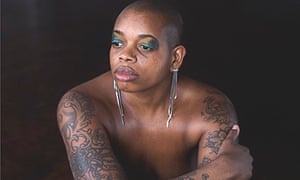
I get a release from having tattoos. It’s therapeutic, like I’m translating my feelings into ink on my body. I have six, but they’re large because I’ve added to them over the years. One on my back runs from my neck to the top of my arse, and I’ve got one the length of each arm, one on each foot and lower leg, and a gekko that circles my belly button. For my 40th next year, my friends are paying for me to have the backs of my arms done. More of my body is covered with tattoos than not.
A good friend has done them all except one. He designs them, too. I don’t see it until he sketches it out in pen on my arm, just before the needle goes in. I trust him. If they start to feel dated, I modernise them. Celtic bands look old hat now, but roses and swallows are classics.
People often ask, “What will you do when you get old?” It’s a strange question: I’ll get old, and have tattoos. I’m happy with them now and I’ll be happy with them when I’m older. They are part of me.
Zoe Kinross, film student, 28

The tattoo on my arm is my third, but the first was on my ankle – a Day of the Dead-style skull with roses. I got it as a way of prompting myself to move forward, to have something that reminded me where I wanted to get to: I wanted to get to Mexico. The second – a peony on my shoulder – was done in Mexico. That was more spontaneous. I was feeling very happy. Tattoos are markers on my body to show how I was feeling at the time. They don’t have to have huge symbolism.
I’d heard the ankle is the most painful place to have a tattoo, but the place that hurt most was my arm, where I have a zebra. It was excruciating, because it went into my armpit, where I now know there are a lot of nerves. I don’t particularly like that area of my arm, and getting the tattoo meant I had to confront that. It was like taking control. Zebras are beautiful, and as their name starts with the same letter as my name, they had an extra significance for me as a kid. A whole zebra wouldn’t work in the space, so we did a head. It took me a while to get used to it, but I enjoy seeing it poking out of a shirt.
Sami Spagnuolo, Masseuse and nutritionist, 35
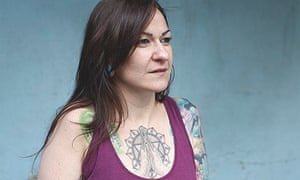
Every one of my tattoos records an event or rite of passage. I think of tattoos as art, but also, every time I look at mine, I relive the emotions I felt when I had them.
I got my first tattoo at 20, and I’ve got 13 now. I don’t get them done straight away; I plan them in detail. I have a few tattoo artists I particularly like; each has a different style, so I know how they’d approach a design. I go to conventions a lot, so I’m familiar with the best artists’ work.
The one on my chest is the heart, or fourth chakra – I got it two years ago. I’ve got a pretty one of flowers on my arm, and one behind my knee of a hand holding a chilli pepper up to some teeth. But the chakra is the one people respond to. I don’t exactly dress to show them off, but I guess you don’t get tattoos unless you want them to be a talking point.
I’m planning a new one: a skinny girl with her wrists tied for my calf. It relates to a time I put on a lot of weight and really suffered, before I realised that being thin is a trap.
 Tattoo Fonts For Women and Women Tattoo Fonts Gallery For Men and Women
Tattoo Fonts For Women and Women Tattoo Fonts Gallery For Men and Women
